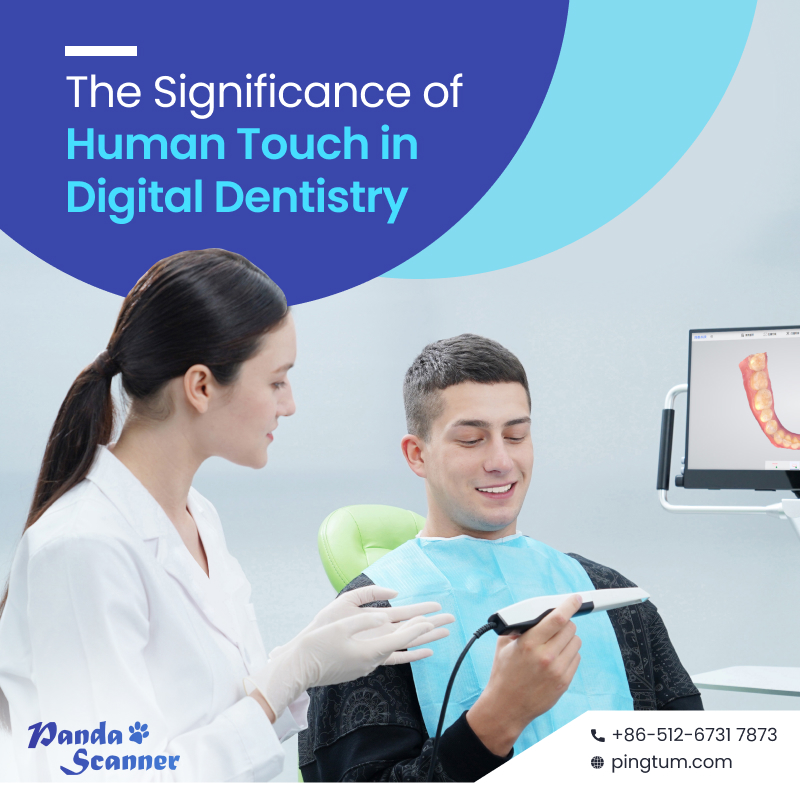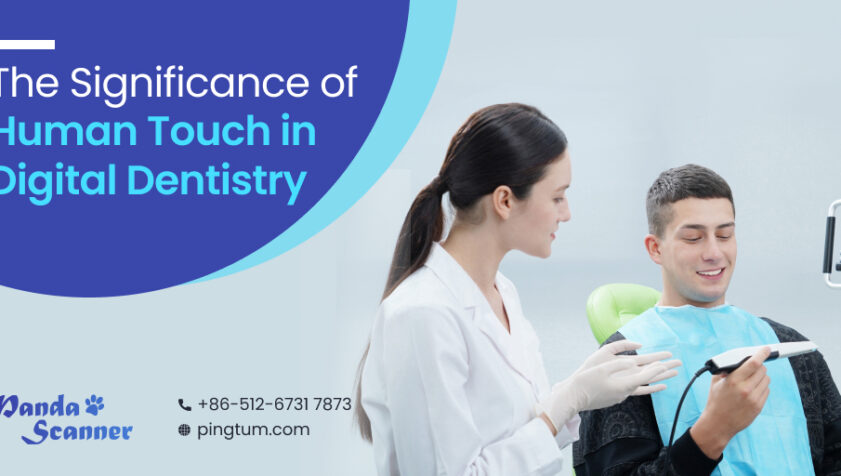Recent years have seen a significant revolution in the dental industry as a result of the quick development of digital technology. Digital dentistry has brought forth a new era of accuracy, efficiency, and patient convenience, bringing together technologies like 3D imaging, CAD/CAM systems, tele dentistry, and AI-driven diagnostics. It’s crucial to remember the human touch—the timeless core of healthcare, despite these wonderful innovations. That’s why we are going to check out how, despite the digital dentistry revolution, the human touch is still an essential part of dental treatment.

Embracing Technological Innovation
Both dentists and patients have greatly benefited from digital dentistry. Digital technologies’ precision and accuracy have revolutionised diagnosis and treatment planning, leading to better outcomes and shorter chair times. For example, painful conventional impressions have been replaced with efficient intraoral scanners, improving patient comfort. The development of digital technology has also created new avenues for aesthetic dentistry, orthodontics, and restorative procedures, enabling individualised care that is catered to the particular requirements of each patient.
The Intersection of Empathy and Technology
The emotional and psychological components of patient care cannot be recreated by machines, even while technology advances the technical parts of dentistry. Empathy, compassion, and the capacity to build sincere relationships with patients are all components of the “human touch.” Understanding patients’ worries, anxieties, and preferences is an important part of the dentist-patient interaction that extends beyond professional processes.
Mutual Understanding and Trust Building
Any healthcare relationship must be built on effective communication. While digital technologies like the Panda P2 intraoral scanner make it easier to share images and data, a dentist’s capacity to pay attention to patients’ concerns, explain things clearly, and answer them builds their trust and confidence. Patients who receive compassionate communication are reassured that they are appreciated as people, not simply cases.
Comfort and Emotional Assistance
Many people experience dread and anxiety during dental operations. A kind remark, a comforting touch, or a caring attitude may do a lot to calm anxiety. Although technology can speed up processes, the human touch offers emotional support when people are at their most vulnerable.
Individualised Care
Every patient has a different medical background, interests, and worries. Although digital data is used to customise treatment plans, human interaction ensures that these plans align with the patient’s overall wellbeing and goals.
Holistic Strategy
Dental health frequently correlates with general health. When creating thorough treatment programmes that cover both dental and general health issues, an empathic dentist considers the patient’s lifestyle, habits, and overall health.
Keeping the Human Touch
It’s critical to include technology in a way that complements, not replaces, the human touch as digital dentistry develops.
Keeping Face-to-Face Communication Going
While teledentistry might be convenient, it’s still necessary to mix in-person appointments and virtual consultations. Dentists can pick up on nonverbal clues and establish a stronger relationship by being physically present.
Patient Engagement and Education
Digital technologies offer strong graphics for describing processes, but a human being must interpret these pictures in a way that is patient-friendly. Patients who are knowledgeable about their dental health are better able to make choices.
Empathy Education
Dental practitioners ought to undergo training in good communication and empathy. Soft skills are just as important as technical abilities, particularly in a profession where fear and anxiety are prevalent.
Adapting While Hearing
Patient suggestions and concerns are carefully listened to as part of the personal touch. Dentists that are committed to providing patient-centred treatment are able to modify their approach in response to patient feedback.
Final Thoughts
The human touch continues to be a crucial component of first-rate patient care in the constantly changing world of digital dentistry. Let us never lose sight of the fact that the heart of dentistry rests in the compassion, empathy, and connection that only the human touch can offer while we leverage the advantages of technology to improve precision and efficiency. Dental practitioners have the capacity to improve not just smiles but also lives by fusing technical innovation and empathy.






